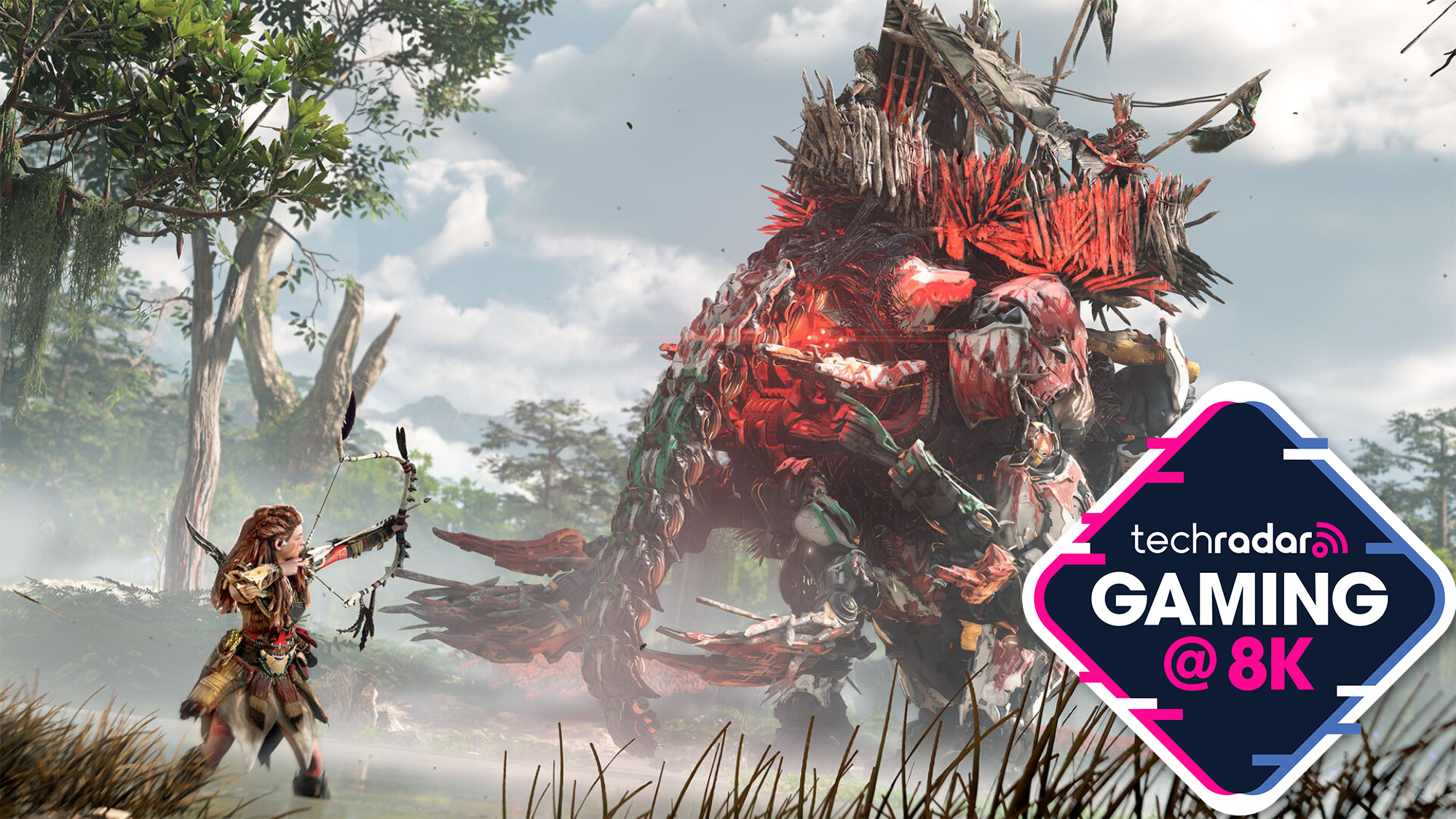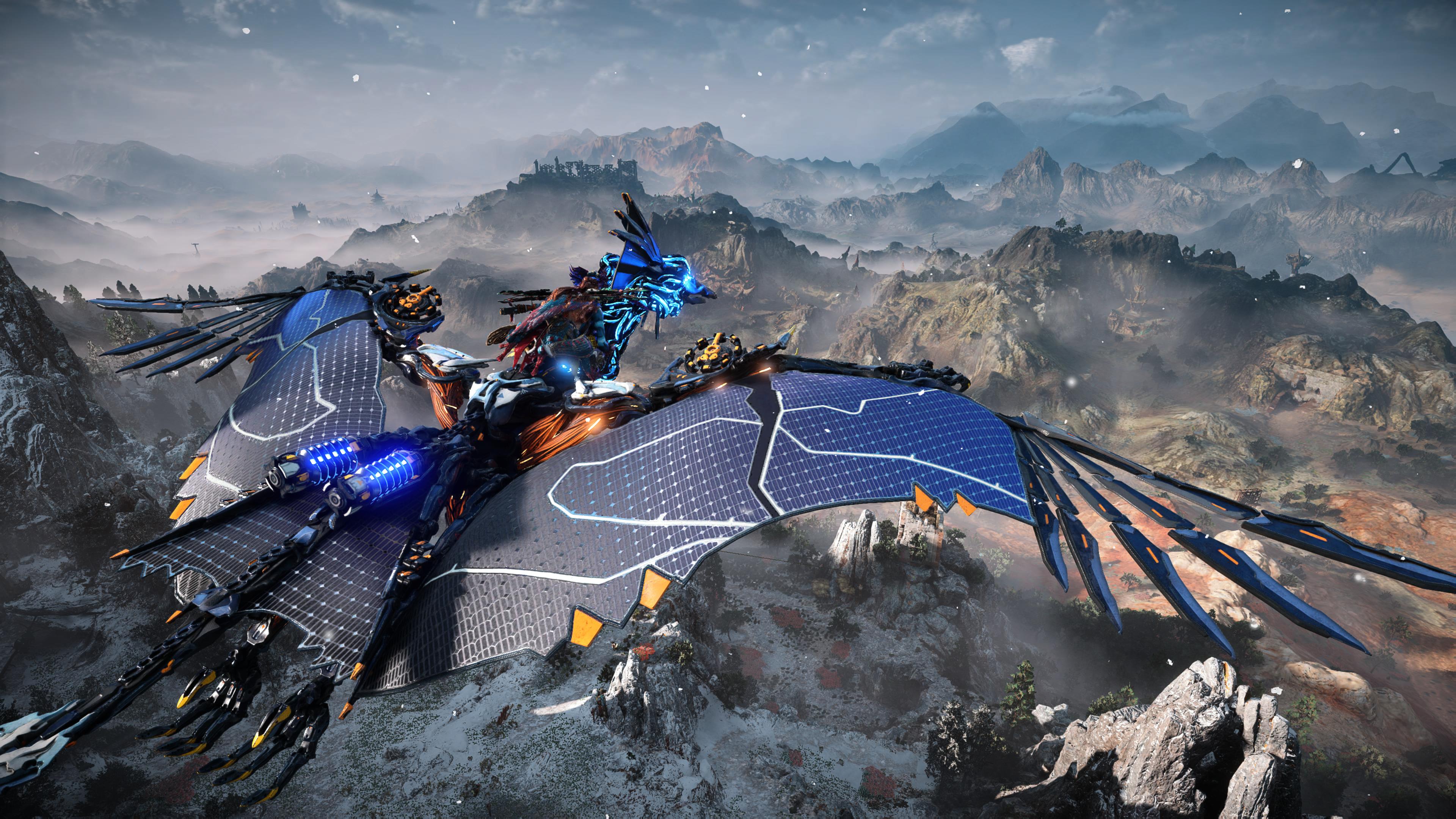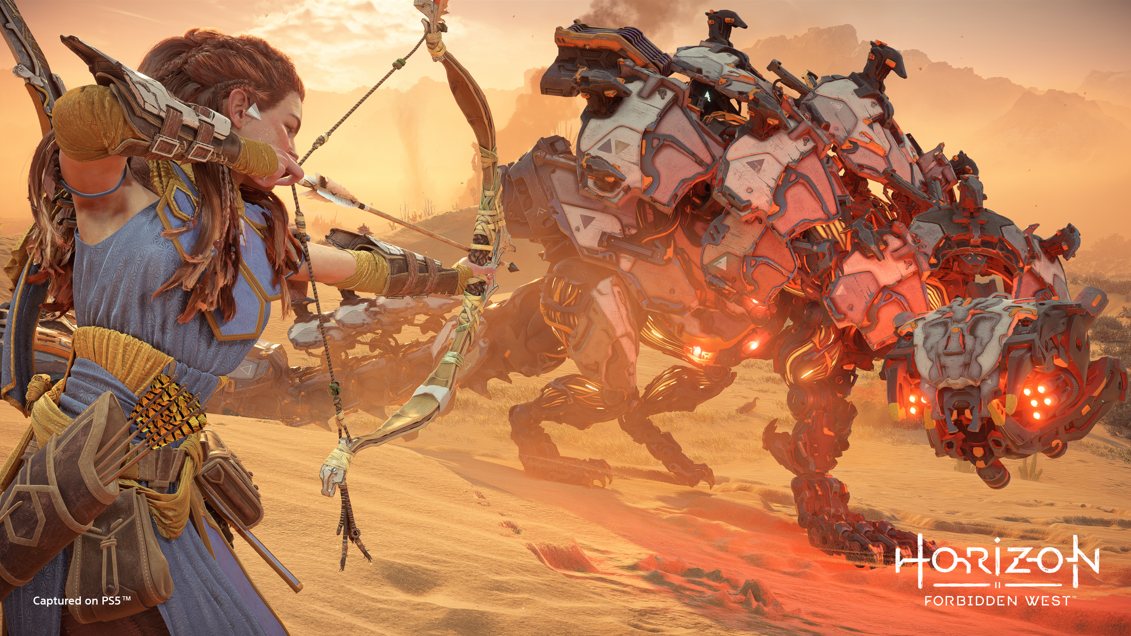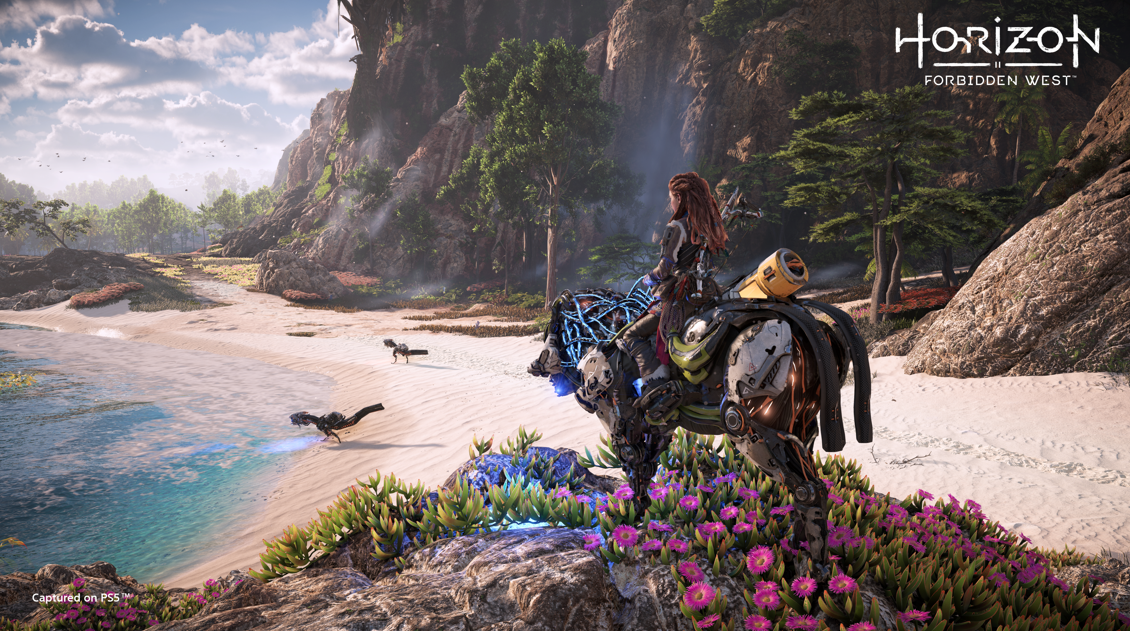Horizon Forbidden West at 8K shows how powerful Nvidia DLSS is compared to AMD and Intel’s tech
Nvidia DLSS remains your best bet - even with an RTX 4090

PC built by Stormforce Gaming
Motherboard: Asus PRIME Z-790P LGA 1700
Processor: Intel Core i9-13900K, 24 Cores / 32 Threads
CPU Cooler: Corsair iCUE H100i 240mm ELITE CAPELLIX Liquid CPU Cooler
GPU: Nvidia GeForce RTX 4090
Storage: 1.0TB Seagate FireCuda 530 M.2 NVMe SSD
Case: Corsair iCue 5000X RGB
RAM: Corsair Vengence 32GB DDR5 4800MHz
Screen: LG 55NANO966PA
Horizon Forbidden West has come to PC, and it's given me another reason not to buy a PS5. I've bought every generation of PlayStation console since the OG model, but with Sony's shift to (belatedly) porting most of its exclusives to PC, it just doesn't seem worth splashing out on a new console when I can just wait for the games I want to play to come to me.
So, I was very happy to hear that Horizon Forbidden West was going to be ported to PC. As a big fan of the original game, which I played on PS4, I'd been looking forward to playing it.
Of course, as a visually-impressive first-party game from Sony, I was also keen to see how it performed on our 8K rig. As you can see in the specs box on the right, our rig has remained largely unchanged for over a year. This is because it remains a formidable machine - and, crucially, the Nvidia GeForce RTX 4090 graphics card that does the bulk of the work when gaming has yet to be beaten. It remains the best graphics card money can buy.
With rumors swirling that Sony is planning on releasing a more powerful PS5 Pro console in the near future that could target 8K resolutions through a mix of more powerful hardware and upscaling technology, Horizon Forbidden West at 8K on PC may give us an idea of the kind of visuals future PlayStation games may offer.
It also suggests what obstacles Sony will face if the PS5 Pro will indeed target 8K resolutions. Despite being almost two years old, the RTX 4090 GPU still costs more than its original launch price, hovering around $2,000/£2,000. While the PS5 Pro will likely be more expensive than the standard PS5, there's no way it'll be even half the price of Nvidia's GPU - and that's before you add in the cost of the other PC components required. Basically, you can't currently buy an affordable 8K gaming machine that is priced for mainstream success. That's the scale of the challenge Sony faces.

Spoilt for choice
One of the best things about Sony's initiative to bring its games to PC, apart from giving me an excuse not to spend money I don't have on a PS5, is that they usually come with an excellent choice of PC-centric options, including support for upscaling technology from Nvidia and support for ultrawide monitors.
Horizon Forbidden West continues this streak, and the PC port has been handled by Nixxes Software, which has handled many previous PlayStation to PC ports.
Get daily insight, inspiration and deals in your inbox
Sign up for breaking news, reviews, opinion, top tech deals, and more.
This latest release is particularly noteworthy as not only does it support DLSS 3 for Nvidia RTX graphics, but it also supports competing upscaling tech in the form of AMD FSR 2.2 and Intel XeSS.
All three of these features allow the game to run at a lower resolution, with the images upscaled so that the game appears at a higher resolution, but without the additional strain on your PC's graphics card.
This mainly allows less powerful GPUs to hit resolutions with graphical effects enabled that they usually wouldn't be able to handle. It also allows the mighty RTX 4090 to reach the demanding 8K resolution (7680 × 4320) in certain games while maintaining a playable framerate.
By supporting the three major upscaling tools, Horizon Forbidden West gives users much more choice (both FSR and XeSS work for a range of GPUs, while DLSS is exclusive to recent Nvidia GPUs) - and it also gives me a chance to see which upscaling tech performs the best.

First up: DLSS
First, I played Horizon Forbidden West at the 8K resolution of 7680 × 4320 and the graphics preset at 'Very High' - which is the highest quality on offer. With DLSS turned off (so the game is running at native 8K), my 8K test rig managed to run Horizon Forbidden West at an average of 32 frames per second (fps).
Considering that this is a graphically-intensive game and running at the highest graphics and at a resolution that's pushing around 33 million pixels, this is very impressive, and is a testament to the raw power of the RTX 4090, the rest of the components inside the rig built by Stormforce Gaming, and the talents of Guerrilla Games (developers of the game) and Nixxes Software.
I feel that 30fps is the minimum frame rate for a playable game, so if you wanted to play Horizon Forbidden West at a native 8K resolution, that's certainly possible. If you drop the graphics preset, then the frame rate will go up - though at the cost of graphical fidelity.
Of course, you don't spend around $2,000 on a GPU to get 32fps in a game, so I turned on DLSS and set it to 'Quality', which minimizes the amount of upscaling performed to preserve image quality as much as possible. This led the average framerate to jump to 45fps, with a maximum frames per second of 60.7fps.
One thing to note with my results, which you can view in the chart above, is that because Horizon Forbidden West doesn't have a built-in benchmark tool, I had to play the same section over and over again, using MSI Afterburner to record my framerate. I chose a section of the game with large open spaces, water effects and a combat encounter, and I tried to make each playthrough, lasting around eight minutes, as similar as possible. However, my playthroughs weren't identical, as some things, such as enemy attacks, would change, and this explains why there are some discrepancies between results. Still, it should give you a good idea of the difference each setting makes.
Next, I turned 'Frame Generation' on. This is a new feature exclusive to DLSS 3 and Nvidia's RTX 4000 series of cards. It uses AI to generate and insert frames between normal frames rendered by the GPU. The goal is to make games feel even smoother with higher, more consistent framerates while maintaining image quality.
As the chart shows, this gave the game another bump in frames per second. I then tested the other DLSS settings with Frame Generation left on.
With DLSS set to Ultra Performance, I hit 59.3fps at 8K - basically the 60fps goal I aim for in these tests, which offers a balance of image quality and performance. With Ultra Performance, the RTX 4090 is rendering the game at a much lower resolution, then using DLSS to upscale to 8K, and this reliance on upscaling can lead to an image quality that can suffer from a lack of sharpness and detail, and graphical artifacts. The good news is that DLSS 3 is a big improvement over previous versions, and the hit to graphic quality is far less noticeable these days.
So, thanks to DLSS, you can indeed play Horizon Forbidden West at 8K. But how does AMD and Intel's rival technologies cope?

AMD FSR 2.2 tested
AMD's FSR 2.2 technology isn't as mature as Nvidia's DLSS 3, but it has a noteworthy feature that DLSS lacks: it's open source and doesn't just work with AMD graphics cards - Nvidia and Intel GPUs can make use of it as well.
This makes it far more accessible than DLSS, which is exclusive to new and expensive Nvidia GPUs, and for many people this flexibility makes up for any shortfall in performance.
As you can see from my results above, FSR 2.2 provides a decent jump in frame rates compared to running Horizon Forbidden West natively at 8K, though at each quality setting, it doesn't quite keep up with DLSS 3's results.
The best results I managed was with FSR set to 'Ultra Performance', where it hit 55.2fps on average. Below DLSS 3's best results, but certainly not bad, and close to doubling the performance of the game compared with playing it natively.
As well as being unable to hit the same highs as DLSS 3, AMD FSR 2.2's image quality at Ultra Performance isn't quite as good as DLSS 3 at similar settings, with a few instances of shimmering and ghosting becoming noticeable during my playthrough.

Intel XeSS results
Finally, I tested out Intel's XeSS technology. While there is a version of XeSS designed to run with Intel Arc graphics cards, as with FSR you can use XeSS with various GPU brands, so there is yet another upscaling tool that gamers can try out. As with most things, the more choice there is for consumers, the better.
XeSS hasn't been around for as long as DLSS or FSR, and as you can see from the results above, it wasn't able to match either of Nvidia or AMD's solutions. There's no 'Ultra Performance' mode either, so XeSS hits its highest framerates with XeSS set to 'Performance', with an average of 50.6fps. This leads to a perfectly playable experience at 8K, but it's noticeably more sluggish than when playing with DLSS at Ultra Performance.
However, it still gives you a decent fps bump over native 8K, and with Intel being one of the biggest proponents of artificial intelligence, I'm pretty confident that XeSS performance will improve as the technology matures. The fact that you can use it with GPUs from Intel's rivals is also a big plus.

Conclusion: DLSS for the win (again)
Once again, DLSS 3 has proved to be the best way of getting a game to run at 8K and 60fps with minimal compromises.
Not only did it allow the RTX 4090 to hit 59.3fps on average while playing Horizon Forbidden West, but it also looked the best with minimal impact to image quality.
This may not come as too much of a surprise - DLSS has been around for quite a while now, and Nvidia has been putting a lot of work into improving the technology with each release.
Also, while Nvidia's preference for proprietary tech means you need the latest RTX 4000 series of GPUs to get the most out of it, this does at least mean Team Green can make use of exclusive features of its GPUs such as Tensor Cores. With AMD and Intel's more open implementations, they are unable to target specific hardware as easily - though FSR and XeSS are available to a much wider range of PC gamers.
And, while FSR doesn't quite match DLSS performance with Horizon Forbidden West, it comes close, and if you don't have an Nvidia GPU, this is a fine alternative. As for XeSS, it shows plenty of promise.
So, upscaling tech has made gaming at 8K on PC achievable, and it's great to see increased choices for users. So, if Sony is indeed working on a PS5 Pro that aims to run games like Horizon Forbidden West at 8K, it's going to have to come up with its own upscaling tech (or adapt FSR or XeSS) if it wants to compete.
You might also like

Matt is TechRadar's Managing Editor for Core Tech, looking after computing and mobile technology. Having written for a number of publications such as PC Plus, PC Format, T3 and Linux Format, there's no aspect of technology that Matt isn't passionate about, especially computing and PC gaming. He’s personally reviewed and used most of the laptops in our best laptops guide - and since joining TechRadar in 2014, he's reviewed over 250 laptops and computing accessories personally.